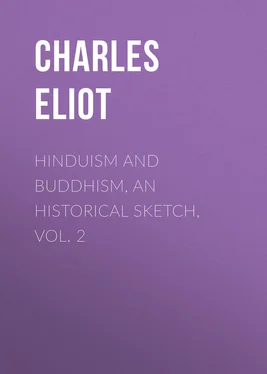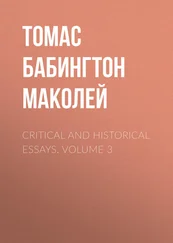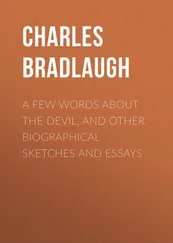Charles Eliot - Hinduism and Buddhism, An Historical Sketch, Vol. 2
Здесь есть возможность читать онлайн «Charles Eliot - Hinduism and Buddhism, An Historical Sketch, Vol. 2» — ознакомительный отрывок электронной книги совершенно бесплатно, а после прочтения отрывка купить полную версию. В некоторых случаях можно слушать аудио, скачать через торрент в формате fb2 и присутствует краткое содержание. Жанр: foreign_religion, Философия, Религиозная литература, foreign_psychology, foreign_antique, foreign_prose, на английском языке. Описание произведения, (предисловие) а так же отзывы посетителей доступны на портале библиотеки ЛибКат.
- Название:Hinduism and Buddhism, An Historical Sketch, Vol. 2
- Автор:
- Жанр:
- Год:неизвестен
- ISBN:нет данных
- Рейтинг книги:4 / 5. Голосов: 1
-
Избранное:Добавить в избранное
- Отзывы:
-
Ваша оценка:
- 80
- 1
- 2
- 3
- 4
- 5
Hinduism and Buddhism, An Historical Sketch, Vol. 2: краткое содержание, описание и аннотация
Предлагаем к чтению аннотацию, описание, краткое содержание или предисловие (зависит от того, что написал сам автор книги «Hinduism and Buddhism, An Historical Sketch, Vol. 2»). Если вы не нашли необходимую информацию о книге — напишите в комментариях, мы постараемся отыскать её.
Hinduism and Buddhism, An Historical Sketch, Vol. 2 — читать онлайн ознакомительный отрывок
Ниже представлен текст книги, разбитый по страницам. Система сохранения места последней прочитанной страницы, позволяет с удобством читать онлайн бесплатно книгу «Hinduism and Buddhism, An Historical Sketch, Vol. 2», без необходимости каждый раз заново искать на чём Вы остановились. Поставьте закладку, и сможете в любой момент перейти на страницу, на которой закончили чтение.
Интервал:
Закладка:
The substance of these legends is probable. Kanishka as a barbarian but docile conqueror was likely to adopt Buddhism if he wished to keep abreast of the thought and civilisation of his subjects, for at that time it undoubtedly inspired the intellect and art of north-western India. Both as a statesman and as an enquirer after truth he would wish to promote harmony and stop sectarian squabbles. His action resembles that of Constantine who after his conversion to Christianity proceeded to summon the Council of Nicæa in order to stop the dissensions of the Church and settle what were the tenets of the religion which he had embraced, a point about which both he and Kanishka seem to have felt some uncertainty. Our knowledge of Kanishka's Council depends chiefly on the traditions reported by Hsüan Chuang 192 192 Watters, vol. I. 270-1.
which present many difficulties. He tells us that the king, acting in consultation with Parśva, issued summonses to all the learned doctors of his realm. They came in such crowds that a severe test was imposed and only 499 Arhats were selected. There was some discussion as to the place of meeting but finally Kashmir 193 193 But Târanâtha says some authorities held that it met at Jalandhara. Some Chinese works say it was held at Kandahar.
was selected and the king built a monastery for the Brethren. When the Council met, there arose a question as to whether Vasumitra (who is not further described) should be admitted seeing that he was not an Arhat but aspired to the career of a Bodhisattva. But owing to the interposition of spirits he was not only admitted but made president.
The texts of the Tripitaka were collected and the Council "composed 100,000 stanzas of Upadeśa Śâstras explanatory of the canonical sûtras, 100,000 stanzas of Vinaya-vibhâshâ Śâstras explanatory of the Vinaya and 100,000 of Abhidharma-vibhâshâ Śâstras explanatory of the Abhidharma. For this exposition of the Tripitaka all learning from remote antiquity was thoroughly examined; the general sense and the terse language (of the Buddhist scriptures) was again and again made clear and distinct, and learning was widely diffused for the safe-guiding of disciples. King Kanishka caused the treatises when finished to be written out on copper plates and enclosed these in stone boxes which he deposited in a tope made for the purpose. He then ordered spirits to keep and guard the texts and not to allow any to be taken out of the country by heretics; those who wished to study them could do so in the country. When leaving to return to his own country, Kanishka renewed Asoka's gift of all Kashmir to the Buddhist Church." 194 194 Walters, l.c.
Paramârtha (499-569 A.D.) in his Life of Vasubandhu 195 195 Translated by Takakusu in T'oung Pao , 1904, pp. 269 ff. Paramârtha was a native of Ujjain who arrived at Nanking in 548 and made many translations, but it is quite possible that this life of Vasubandhu is not a translation but original notes of his own.
gives an account of a council generally considered to be the same as that described by Hsüan Chuang, though the differences in the two versions are considerable. He says that about five hundred years 196 196 Chinese expressions like "in the five hundred years after the Buddha's death" probably mean the period 400-500 of the era commencing with the Buddha's death and not the period 500-600. The period 1-100 is "the one hundred years," 101-200 "the two hundred years" and so on. See B.E.F.E.O. 1911, 356. But it must be remembered that the date of the Buddha's death is not yet certain. The latest theory (Vincent Smith, 1919) places it in 554 B.C.
after the Buddha's death ( i.e. between 87 B.C. and 13 A.D. if the Buddha died 487 B.C.) an Indian Arhat called Katyâyanî-putra, who was a monk of the Sarvâstivâdin school, went to Kipin or Kashmir. There with 500 other Arhats and 500 Bodhisattvas he collected the Abhidharma of the Sarvâstivâdins and arranged it in eight books called Ka-lan-ta (Sanskrit Grantha ) or Kan-tu (Pali Gantho ). This compilation was also called Jñâna-prasthâna. He then made a proclamation inviting all who had heard the Buddha preach to communicate what they remembered. Many spirits responded and contributed their reminiscences which were examined by the Council and, when they did not contradict the sûtras and the Vinaya, were accepted, but otherwise were rejected. The selected pieces were grouped according to their subject-matter. Those about wisdom formed the Prajñâ Grantha, and those about meditation the Dhyâna Grantha and so on. After finishing the eight books they proceeded to the composition of a commentary or Vibhâshâ and invited the assistance of Aśvaghosha. When he came to Kashmir, Katyâyanî-putra expounded the eight books to him and Aśvaghosha put them into literary form. At the end of twelve years the composition of the commentary was finished. It consisted of 1,000,000 verses.... Katyâyanî-putra set up a stone inscribed with this proclamation. "Those who hereafter learn this law must not go out of Kashmir. No sentence of the eight books, or of the Vibhâshâ must pass out of the land, lest other schools or the Mahayana should corrupt the true law." This proclamation was reported to the king who approved it. The sages of Kashmir had power over demons and set them to guard the entrance to the country, but we are told that anyone desirous of learning the law could come to Kashmir and was in no way interrupted.
There follows a story telling how, despite this prohibition, a native of Ayodhya succeeded in learning the law in Kashmir and subsequently teaching it in his native land. Paramârtha's account seems exaggerated, whereas the prohibition described by Hsüan Chuang is intelligible. It was forbidden to take the official copies of the law out of Kashmir, lest heretics should tamper with them.
Târanâtha 197 197 Chap. XII.
gives a singularly confused account of the meeting, which he expressly calls the third council, but makes some important statements about it. He says that it put an end to the dissensions which had been distracting the Buddhist Church for nearly a century and that it recognized all the eighteen sects as holding the true doctrine: that it put the Vinaya in writing as well as such parts of the Sûtra-piṭaka and Abhidharma as were still unwritten and corrected those which already existed as written texts: that all kinds of Mahayanist writings appeared at this time but that the Śrâvakas raised no opposition.
It is hard to say how much history can be extracted from these vague and discrepant stories. They seem to refer to one assembly regarded (at least in Tibet) as the third council of the Church and held under Kanishka four or five hundred years 198 198 See Watters, I. pp. 222, 224 and 270. It is worth noting that Hsüan Chuang says Asoka lived one hundred years after the Buddha's death. See Watters, I. p. 267. See also the note of S. Lévi in J.R.A.S. 1914, pp. 1016-1019, citing traditions to the effect that there were 300 years between Upagupta, the teacher of Asoka, and Kanishka, who is thus made to reign about 31 A.D. On the other hand Kanishka's chaplain Sangharaksha is said to have lived 700 years after the Buddha.
after the Buddha's death. As to what happened at the council tradition seems to justify the following deductions, though as the tradition is certainly jumbled it may also be incorrect in details.
( a ) The council is recognized only by the northern Church and is unknown to the Churches of Ceylon, Burma and Siam. It seems to have regarded Kashmir as sacred land outside which the true doctrine was exposed to danger. ( b ) But it was not a specially Mahayanist meeting but rather a conference of peace and compromise. Târanâtha says this clearly: in Hsüan Chuang's account an assembly of Arhats (which at this time must have meant Hinayanists) elect a president who was not an Arhat and according to Paramârtha the assembly consisted of 500 Arhats and 500 Bodhisattvas who were convened by a leader of the Sarvâstivâdin school and ended by requesting Aśvaghosha to revise their work. ( c ) The literary result of the council was the composition of commentaries on the three Pitakas. One of these, the Abhidharma-mahâvibhâshâ-śâstra, translated into Chinese in 437-9 and still extant, is said to be a work of encyclopædic character, hardly a commentary in the strict sense. Paramârtha perhaps made a confusion in saying that the Jñâna-prasthâna itself was composed at the council. The traditions indicate that the council to some extent sifted and revised the Tripitaka and perhaps it accepted the seven Abhidharma books of the Sarvâstivâdins. 199 199 See Takakusu in J.P.T.S. 1905, pp. 67 ff. For the Sarvâstivâdin Canon, see my chapter on the Chinese Tripitaka.
But it is not stated or implied that it composed or sanctioned Mahayanist books. Târanâtha merely says that such books appeared at this time and that the Hinayanists raised no active objection.
Интервал:
Закладка:
Похожие книги на «Hinduism and Buddhism, An Historical Sketch, Vol. 2»
Представляем Вашему вниманию похожие книги на «Hinduism and Buddhism, An Historical Sketch, Vol. 2» списком для выбора. Мы отобрали схожую по названию и смыслу литературу в надежде предоставить читателям больше вариантов отыскать новые, интересные, ещё непрочитанные произведения.
Обсуждение, отзывы о книге «Hinduism and Buddhism, An Historical Sketch, Vol. 2» и просто собственные мнения читателей. Оставьте ваши комментарии, напишите, что Вы думаете о произведении, его смысле или главных героях. Укажите что конкретно понравилось, а что нет, и почему Вы так считаете.












